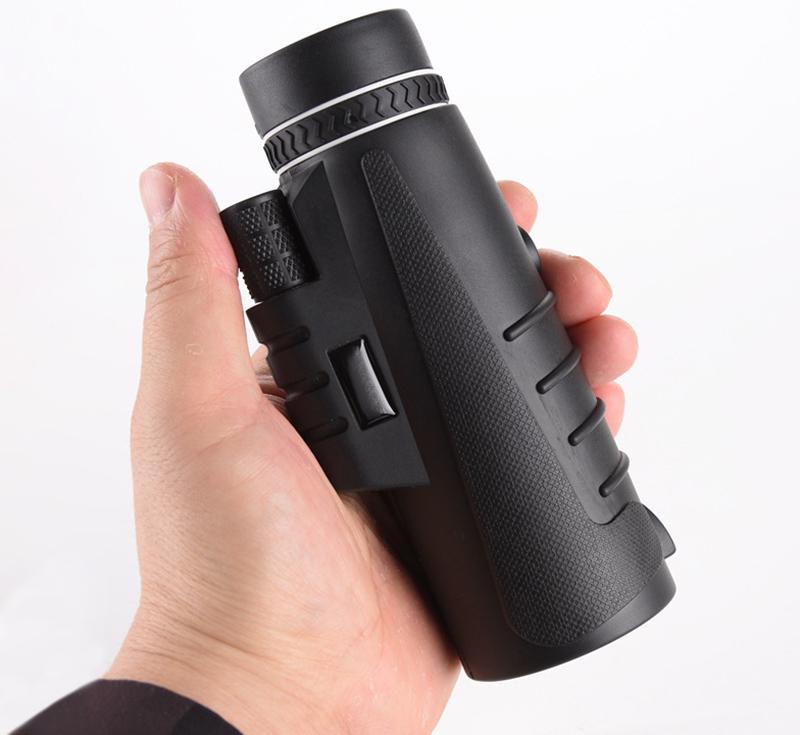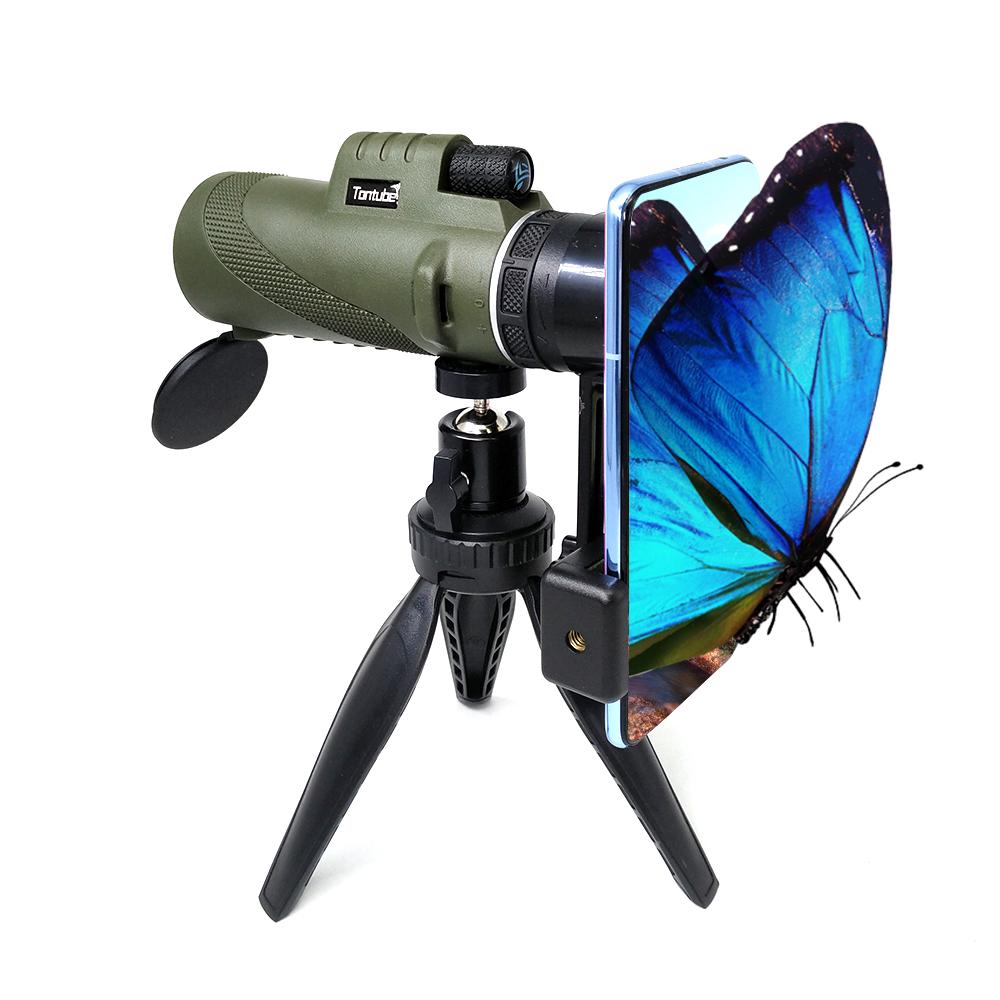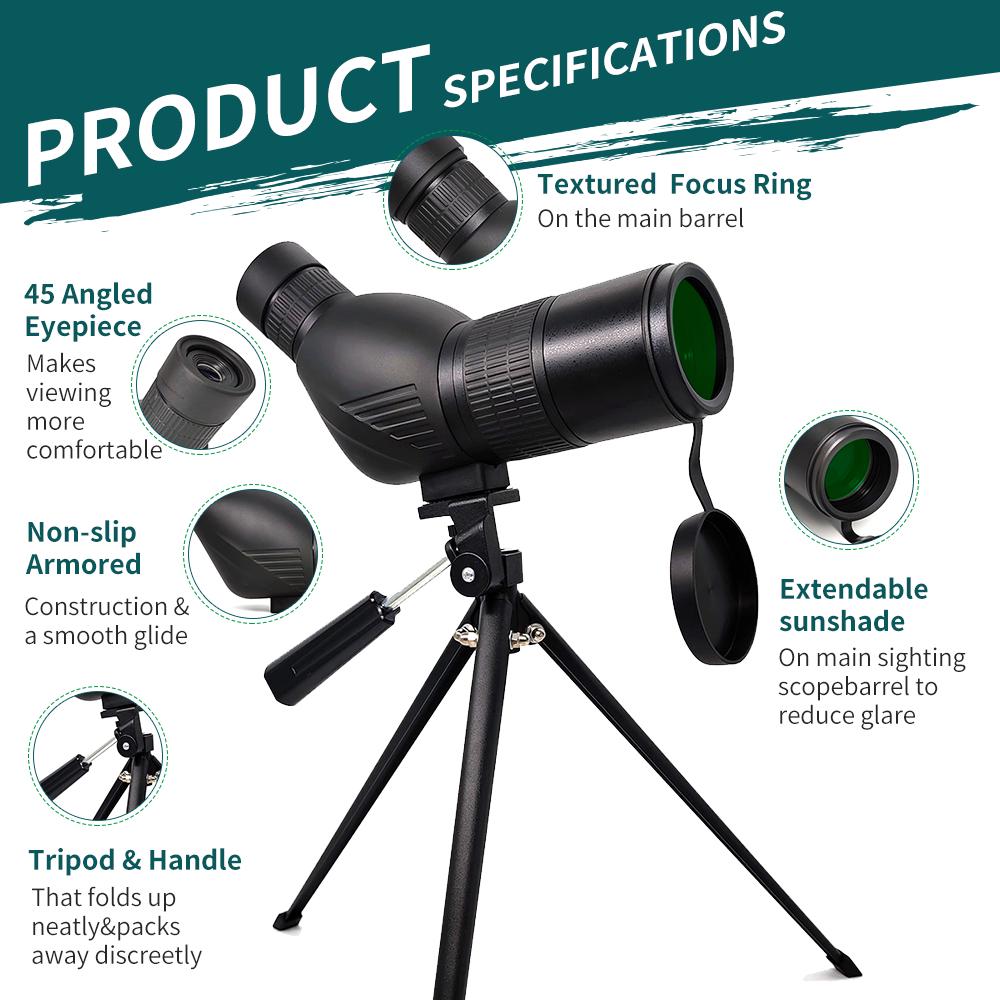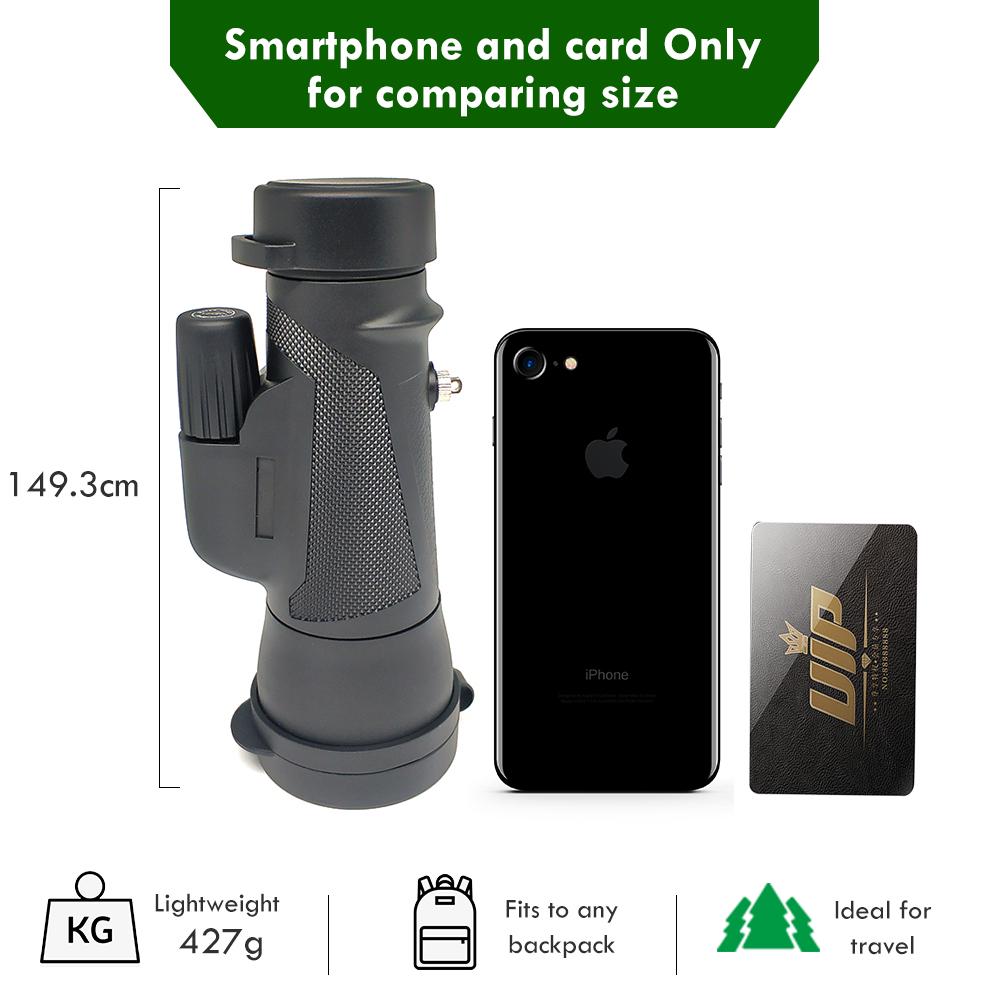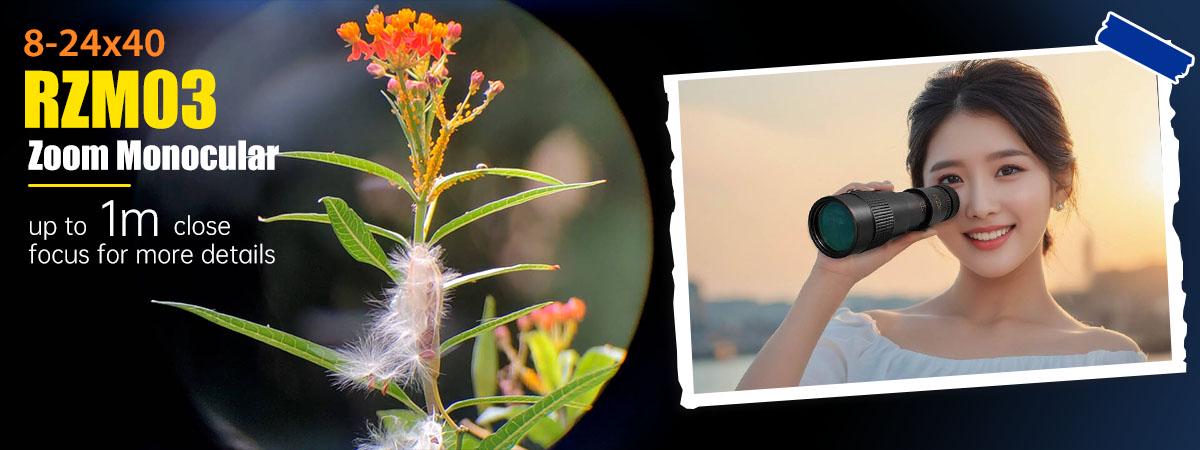What is a Monocular?
A monocular is a compact, low-powered telescope or spotting scope that you hold in one hand, using it with one eye, much like a telescope. Combining features of both binoculars and spotting scopes, a monocular is much smaller and more portable than either of them. In fact, size is what defines a monocular. Some models are no larger than your thumb or slightly thicker than a pen, making them easy to slip into a pocket or purse. When a binocular or spotting scope—no matter how compact—feels too bulky to carry, a monocular provides the perfect alternative. There’s simply no excuse for leaving home without one.
A good time to consider a monocular is when you need something small and convenient to quickly check your surroundings. Or when you’re outdoors and you accidentally spot distant objects that spark your interest. Take a peek with your monocular.
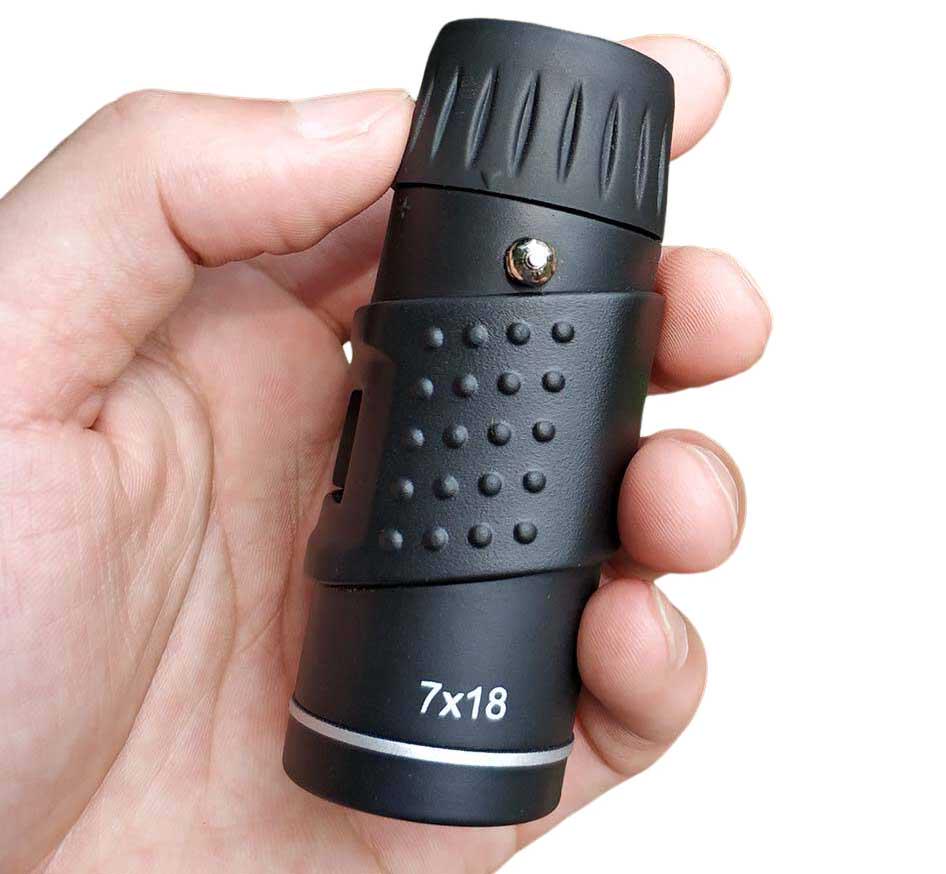
Some monoculars also function as magnifiers, with close-focus capabilities. Simply turn one over, hold it over an object, and you have an instant magnifier.
Monocular vs Binocular vs Spotting Scope
When should you choose binoculars instead of a monocular? If you need to observe something for an extended period or scan a wide area, binoculars are the better option. Using both eyes reduces eye strain and enhances visual acuity, which is especially important for long-term viewing. For activities like birding, hunting, surveillance, and astronomy, binoculars provide a superior experience. That said, the advantage of a monocular is its portability—it’s an excellent tool to have on hand when you wouldn’t typically carry binoculars. For instance, I’ve spotted and recorded numerous birds simply because I had my monocular with me in my purse.There’s another really cool way. You can use a phone clip to attach a monocular telescope to your phone’s camera. Then you can look at the phone screen with both eyes and even record the cool stuff you see. which is the most common use of monoculars.
When should you choose a spotting scope instead of a monocular? If you need higher magnification than what a monocular or binocular can provide, a spotting scope is the way to go. Although it might seem like a larger version of a monocular, the two are quite different. A spotting scope is larger and heavier, requiring a tripod for stability due to its high magnification. In comparison, a monocular is small, portable, and designed for quick, on-the-go observations, making it the more practical choice when portability is key.
If you want to have the best of both worlds, you can go for a low-magnification spotting scope, such as the 12-36×50. This spotting scope is nice and compact, easy to tote around. It’s got variable magnification and you don’t need a big, bulky tripod. You can just set it on a rock or a tree branch and still get a steady view.
Monocular Magnification and Objective Size
Magnification (the first number, such as the 10 in 10×42) indicates how many times the image is magnified compared to what you would see with the naked eye. While higher magnification might seem appealing, it can actually make the instrument more difficult to use. This is particularly true for small, lightweight devices like monoculars. A magnification of 6x or 8x is typically ideal for a monocular, as it provides a steady view with a wide field of vision, making it easier to locate your target. An 10x magnification, while still manageable, will be harder to stabilize and offer a narrower field of view. A 12x magnification will be even more challenging to use. Additionally, zoom monoculars, though versatile, are generally less durable than fixed-magnification models. And at the same multiples, zoom monoculars have a smaller field of view.
Objective size, represented by the second number (e.g., 10×50), refers to the diameter of the front lens in millimeters. A larger objective lens typically improves optical performance, all else being equal. However, bigger isn’t always better. A larger lens will increase the size and weight of the monocular. For example, a 10×50 monocular is roughly half the size of a full-sized pair of binoculars, while a 7×18 monocular is small enough to fit in your pocket. When it comes to performance, optical quality is more important than the sheer size of the objective lens. You can find excellent optical performance in compact monoculars, though they may come at a higher price.
Field of View, Eye Relief, Lens Coating, and More
Field of View
Field of view refers to how much of the scene you can see through the monocular. For instance, if you’re looking at a fence 1,000 yards away and the monocular offers a field of view of 372 feet at 1,000 yards, you’ll see a 372-foot section of the fence. If the field of view is 250 feet at 1,000 yards, you’ll see only 250 feet. Keep in mind a basic rule of optics: as magnification increases, the field of view decreases. If you prefer a wide field of view, choose a monocular with lower magnification.

Eye Relief
Eye relief is the distance between your eye and the eyepiece while still being able to see the full field of view. This is typically measured in millimeters. If you wear glasses, eye relief becomes crucial, as glasses may prevent you from getting close enough to the eyepiece to see the entire image. If you wear glasses, look for a monocular with at least 14mm of eye relief to ensure comfort and a full view.

Close Focus
Close focus refers to the minimum distance at which a monocular can focus on an object. Some models allow for close focus in inches rather than yards, which adds versatility to the monocular. For example, being able to focus on a butterfly just a few feet away can be a truly spectacular experience.
Lens Coatings
Lens coatings significantly impact image brightness and clarity. The best monoculars are typically labeled as “fully multi-coated,” followed by “multi-coated,” and then “fully coated.” These coatings enhance light transmission, improving the brightness and quality of your view.
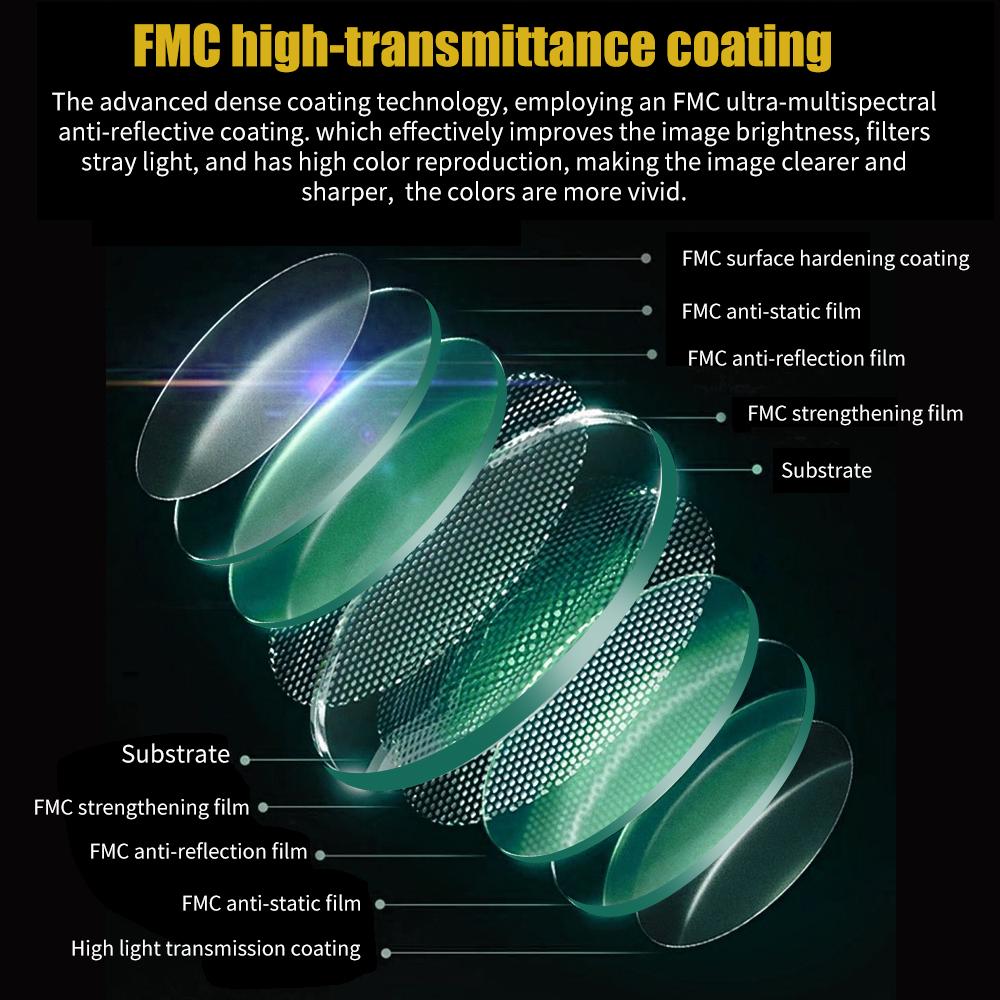
Waterproofing
If you’ll be using your monocular in wet conditions—whether on a boat, around water, or in a damp climate—a waterproof monocular is essential. However, for most casual uses, waterproofing isn’t a must unless you anticipate exposure to water or heavy rain.
The optical quality can be figured out by looking at the field of view. It mainly covers things like brightness, color, how good the image is, the field of view, and the exit pupil diameter. If you use a telescope a lot, you gotta be careful and check out these factors to make sure you get a nice, high-quality one. You can also have a look at my previous article “How Do the Parts of Monocular Telescope Work?” for more info.



